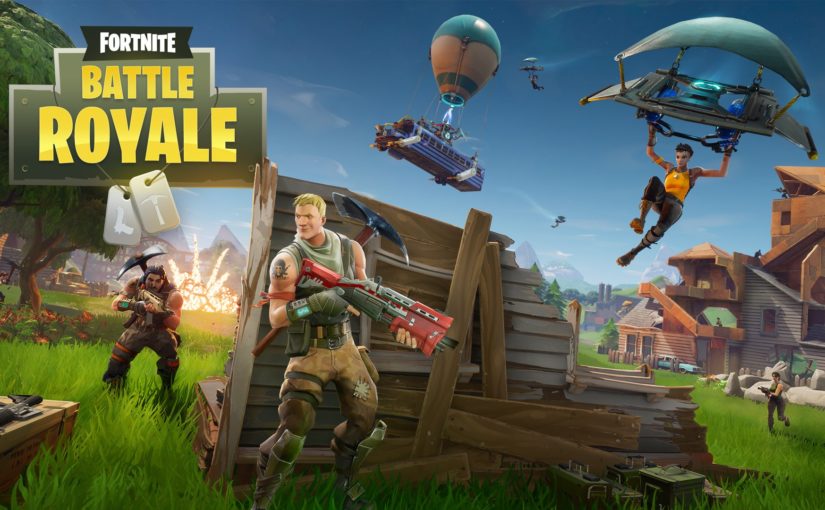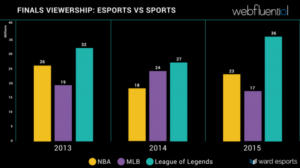The Mass Multiplayer Online Game MapleStory Uses Rewards to Motivate Players to Collaborate and Form Communities.
Abstract
The reason behind why people play games and form communities in the online game MapleStory. Positive rewards are used by the game designers to motivate desirable behaviour and negative stimulus are used to reduces undesirable behaviours. MapleStory uses positive reward systems to incentives collaboration and the formation of communities.
Keywords
Behaviour, online gaming, MapleStory, communities, collaboration, reward systems, motivation, rules, game designs, play, development, MMOG
The purpose of this essay is to explore why people play games and how the Mass Multiplayer Online Game (MMOG’s) MapleStory motivates desirable behaviours, such as collaboration and forming communities. In this paper, I argue that rewards are used motivate desirable behaviours The following essay will begin by introducing why people engage in play. Then explore the essential motivational drivers behind collaboration and communities in MapleStory.
The reason behind why people engage play is due to the significance of free play for the human brain development according to Dr Panksepp and Dr David Van Nuys, who discovered the play circuit in mammals by examining neurobiological behaviours in rats, which strongly suggests the areas intralaminar nuclei and thalamus make up part of the play circuit. Their research begins by explaining how the human brain contains seven primary emotional processing systems, shared by mammals, which helps anticipate and respond to situations. [r/o] These shared areas are responsible for driving play, especially in children. Dr Panksepp and Dr David Van Nuys describe the importance of free play, as it is essential for the development of neural connections which have a critical role in regulating emotions planning and solving problems and helps to navigate complex social interactions. Panksepp findings suggest out of 1200 genes one-third were significantly changed by a half-hour of play (Panksepp, 1998). The significance of this is it proves play is not a social construction and the importance of play for the human development is an essential requirement. Without understanding the importance and its necessity of play to the human development, it is difficult to understand why so many people engage in games.
What constitutes a game is that it is governed by a set of rules. The Oxford dictionary defines games as “A form of competitive activity or sport played according to rules” (Oxford, n.d.). Thus the primary dividing point between play and games are rules. Once rules are applied to play, a game appears. For instance, a ball with actively engaging participants becomes a match of tennis, basketball etc. Hands can form the game of rock, paper and scissors.
Jesper Juul’s (2010) research paper “The game, the player, the world: Looking for a heart of gameness” explains how games provide a new context for action and meaning, and without a set of rules, participants could not win at chess or make checkmate, however within the rules, there are various options to play (Juul, 2010). In Roger Cailloise’s (2001,1961) paper “Man, Play and Games” noted that the process of play has a beginning middle and end. He suggests when one decides to play a game, it means they are prepared to play within the rules and be governed by them. He used the example of a boxing match to illustrate how it is a part of the restrictiveness which makes the game playable and the goal is not only winning but to enjoy the obstacles set up by the rules (Caillois, 2001,1961). Rules are the essential aspect which makes up a game. The rules provide a context which restricts all player similarly and rewards the players who play well within the rules. Due to the similarity each player experience throughout the game, rules provide a sense of common goal and interest this common interest fosters a sense of community. The Oxford dictionary defines Community as “The condition of sharing or having certain attitudes and interests in common”(Oxford, nd).
Furthermore, Games and play both require voluntary participation, but games also require active acceptance of the rules. Liebe (2016) uses an illustration of a magical circle to explain games and suggests the space within the magic circle is where the game occurs and the formation of a magic circle is dependent on the players’ participation (Liebe, 2016). The ungoverned space outside the circle may be everything else outside of the game but within the game by engaging the player is voluntary making an agreement to play by the rules. For example, playing the mass multiplayer online game Maple Story automatically requires the player to actively accept the rules by the action of participating. This Therefore suggests the game cannot force the individual to participate in the game or play by its rules, but once the individual has engaged in playing, the rules will govern the player’s actions.
By examining Maple Story’s rules the game indicates its complexity and sophistication. In simple games such as noughts and crosses the rules can be easily described however as Maple Story is an established MMOG, players are submerged in a highly regulated space where most users would not know or need to know all the rules. The players only need to follow the game and it will show the players the rules once it is necessary. It is difficult for players to do otherwise as the game does not allow for the player to do so (action rage is limited to the design of the game). Thus the game can be seen as a guide and the player as tourists learning what they can and cannot do as they progress through the game(Caillois, 2001,1961). The gamer only knows how to play within the rules because within rules are in a sense the only action rage. Whatever is possible within a game has already been predetermined before the game has begun. This restrictive and confined space leads the player where the game wants the player to progress to, allowing the game designer to pre-determine results, set up obstacles and manipulate/motivate behaviour. Behaviour such as building communities and collaboration is desirable to any MMOG as it is thought to keep players gaming for social factors, such as online friends and help the game build relationship ties between its players and strengthen the player’s relationship with the game (Brox, 2011).
The method Maple Story uses to promote these desirable behaviours is through a reward system. The gammers are rewarded when performing tasks the game deems desirable. In Maple Story these reward systems are can be seen when gamers are rewarded more when gaming together than alone. MapleStory is also designed to be played by collaborating this is shown in group quests, which are quests that rewards significantly more than personal quests (rewards in the game are in the form of experience, equipment, weapons, and other things with monetary value) Group quest can only be accessed after a group is forms.
Characters in maple story have different abilities depending on their job occupation, the strength of these abilities depend on the level of the character. This is important because when in the midst of solving a complex problem; such as solving a maze and hunting monsters, different skills are required. It becomes compulsory to find other players with those skills to form a team with to accomplish group quests. Collaboration within MapleStory’ becomes compulsory at certain points of the game because the game is designed so no character has all of the skills required to solve certain problems. By having these communal restrictions, motivations and rewards for working collaboratively and forming communities, the players are more likely to act in a manner which allows them to achieve the most from the game. By gaming in a manner to maximise rewards and minimise the risks the player will move forward within the game faster. The game is carefully calibrated to keep players on the edge of exploration and requires gamers to use problem-solving skills. MapleStory puts enthuses on learning to cooperate with other gamers this is thought to be good for creating communal ties which bond the player to each other and even deeper into the game. The obstacles set up within the game are complex to solve and require multiplayer collaboration to solve. Its the constant stimulus from different reward systems that encourage certain characteristics of player behaviour such as forming guilds.
A clear indication of the game developers desire to see communities within the game flourish is the infrastructure of the guild systems. Guild’s are a design within MapleStory which allows for hundreds of people to belong to one single guild. Guild system within MapleStory is seen as small communities within the big maple community.. They are thought to provide a sense of belonging and status within the group. Facilitating communication tools are designed to enhance the efficiency and speed of communication, functions such as one to one chat, one to many are accessible within the guild. This allows gamers to easily post notifications and ask for help. Some of the benefits of belonging/joining a guild is newbies (new players) can receive consultation from more experienced players. They often receive equipment and training from experienced players. Maple Story is designed to allow experienced players to train inexperienced players and give them experience (experience is the essential requirement to level up within the game and can be collected when monsters are defeated). This design which allows the experienced player to train inexperienced player is a clear indication of the game developers desire to see gamers collaborating.
By using Abraham Maslow’s “A Theory of Human Motivation” (1943) explains some of the motivations for the individual’s active participation in collaboration. The following is a brief outline of Maslow’s Hierarchy of Needs. The first level and most basic is the physiological need for food, water and clothing. This is shown in MapleStory when newbies join communities such as guilds to receive benefits such as equipment, weapons and basic training. Maslow’s Second level safety needs such as a housing, savings. This is shown in the game as the game provides better monetary rewards for players when they accomplish group quests in comparison to individual quests. The third level affection needs such as family and friends are shown in MapleStory though online friendship/relationships, these are players who meet through the game and form a meaningful relationship. The fourth level self-esteem needs such as recognition and social status are shown through MapleStory when players commit a lot of time to achieve status in positions such as a Guild leader, a high-level player or use limited edition clothing/armour to express their status. The Fifth level self-actualisation needs such as goals and exploring interests. This level of need is shown in the game when players move from casual gaming to a competitive gaming state. Maslow theory suggests human behaviours is usually motivated by one or more of the following five levels of needs, by using Maslow’s Hierarchy of need with examples from Maples story, it shows how MapleStory motivates certain behaviours (Maslow, 1943).
Melis and Tomasello (2013) research paper “Chimpanzees’ (Pan troglodytes) strategic helping in a collaborative task” demonstrates how the correct motivation does not only drive humans to collaborate but also mammals. The author’s findings suggest animal cooperation is more motivational than cognitive. The research was conducted by giving Chimpanzee roles and tools which were not interchangeable by measuring the willingness to transfer a tool to see levels of collaboration to reach reward (food). Their findings demonstrated most subjects worked collaboratively and not only coordinated different roles but also understood which actions their partner needs to perform (Melis & Tomasello, 2013). In other words, Reward systems and motivations can incentivise great levels of participation. MapleStory was able to use the method of rewarding desirable behaviour with positivity stimulus and undesired behaviour with negative stimulus to craft an active collaborative environment which benefits the participants. Some of the negative stimulus used within MapleStory is when gamers attempt to tackle certain monsters without collaborating with other they die within the game. Death within the game has signification connotations, it reduces the players hard earned experience. This is a sign of the heavy hand the Maple Story game designer have regarding collaboration. This also shows how much they desire collaboration within the game. The traits Maple Story deems most desirable are thought to be collaboration, participation, communal efforts and daily active play.
In conclusion, the free Massively Multiplayer Online Role-Playing Game MapleStory has created an alternative world with meaning, social connections, community, monetary value and social status.
Why people play is due to the biological necessity of play, games provide a governed space to play within. When individuals actively engage by playing the online game MapleStory they are surrendering to its rules and participating within the parameters of the game’s design. The design of MapleStory encourages collaboration and the formation of communities. This is shown by group quests and guild’s. MapleStory uses reward systems such as experience, monetary items, obstacles and constraints to guide players to behave accordingly. The game makes it difficult to achieve the ultimate goal (reaching a high level) without the use of collaboration and the formation of communities. Maslow’s (1943) Theory of Human Motivation explains some of the motivation for certain behaviours within MapleStory. The use of positive stimulus to reward and negative stimulus to discourage what MapleStory deems desirable or undesirable behaviour, motivates players to willingly embrace the desirable behaviour. MapleStory pays significant attention to the facilitating tools necessary for collaboration which is communication. Various forms of communication tools are accessible to its gamers. This allows Maple Story’s gamers to easily communicate with each other to form communities and find other gamers to collaborate with. MapleStory is designed to have various options of play, but its also designed when players choose to collaborate and form communities it provides them with best results and fastest route to the ultimate goal of the game which is reaching the highest level.
References
Collaboration. (n.d.). Retrieved April 01, 2018, from http://www.dictionary.com/browse/ collaboration?s=t
Caillois, R. (2001/1961). Man, Play and Games, (translated by Meyer Barash). Urbana: University
of Illinois Press
Game | Definition of play in English by Oxford Dictionaries. (n.d.). Retrieved March 30, 2018, from https://en.oxforddictionaries.com/definition/game
Juul, J. (2010). The Game, the Player, the World: Looking for a Heart of Gameness*. ^^The Game,
the Player, the World: Looking for a Heart of Gameness*, 248-270. Retrieved March 25, 2018, from http://www.revistas.uneb.br/index.php/plurais/article/viewFile/880/624
Khambatti, M. S., Ryu, K. D., & Dasgupta, P. (2002). Efficient discovery of implicitly formed peer-to-peer communities. International Journal of Parallel and Distributed Systems and Networks, 5(4), 155-164.
Liebe, M. (2016). There is no magic circle: On the difference between computer games and tradi tional games. The Philosophy of Computer Games Conference Proceedings, 1-4. Retrieved March 20, 2018, from https://books.google.com.au/books?id=168vCw AAQBAJ&pg=PA2&lpg=PA2&dq=Tara Brabazon play up play around&source=bl&ots=EQ7- x8xrN7&sig=7Do5SlDHuwaPy95jXN9p b4N2IO8&hl=en&sa=X&ved=0ahUKEwjQpbKO38zKAhVP02MKHXP2CZc Q6AEIKzAF#v=onepage&q&f=false.
Maslow, A. (1943). A Theory of Human Motivation. Psychological Review, 50(4), pp.370-396.
McIntyre, J., Palmer, D., & Franks, J. (2009). A Framework for Thinking about Collaboration within the Intelligence Community. Person Associates. Retrieved March 20, 2018, from http: www.pherson.org/wp-content/uploads/2013/11/09.-A-Framework-for- Thinking-about-Collaboration-within-the-Intelligence-Community_FINAL.pdf
Melis, A. P., & Tomasello, M. (2013). Chimpanzees (Pan troglodytes) strategic helping in a collaborative task. Biology Letters, 9(2), 20130009-20130009. doi:10.1098/rsbl. 2013.0009
Nuys, D. V. (2013). The Emotional Foundation of Mind- Dr Jaak Panksepp. The Neuropsychotherapist, 90-104. doi:10.12744/tnpt(2)090-104
Panksepp, J., Knutson, B., & Pruitt, D. L. (1998). Toward a Neuroscience of Emotion. What Develops in Emotional Development?, 53-84. doi:10.1007/978-1-4899-1939-7_3
Play | Definition of play in English by Oxford Dictionaries. (n.d.). Retrieved March 30, 2018, from https://en.oxforddictionaries.com/definition/play
Reeves, B. & Read, J.L. (2009). Total engagement: Using games and virtual worlds to change the way people work and businesses compete. Harvard Business Press: Boston.
Salen, K., & Zimmerman, E. (2004). Rules of Play: Game Design Fundamentals. Cambridge,
MA: MIT Press.
Williams, D. (2013). A Brief Social History of Game Play. A Brief Social History of Game Play. Re trieved March 20, 2018, from https://is.muni.cz/el/1421/podzim2013/IM082/um/ WilliamsSocHist.pdf .






